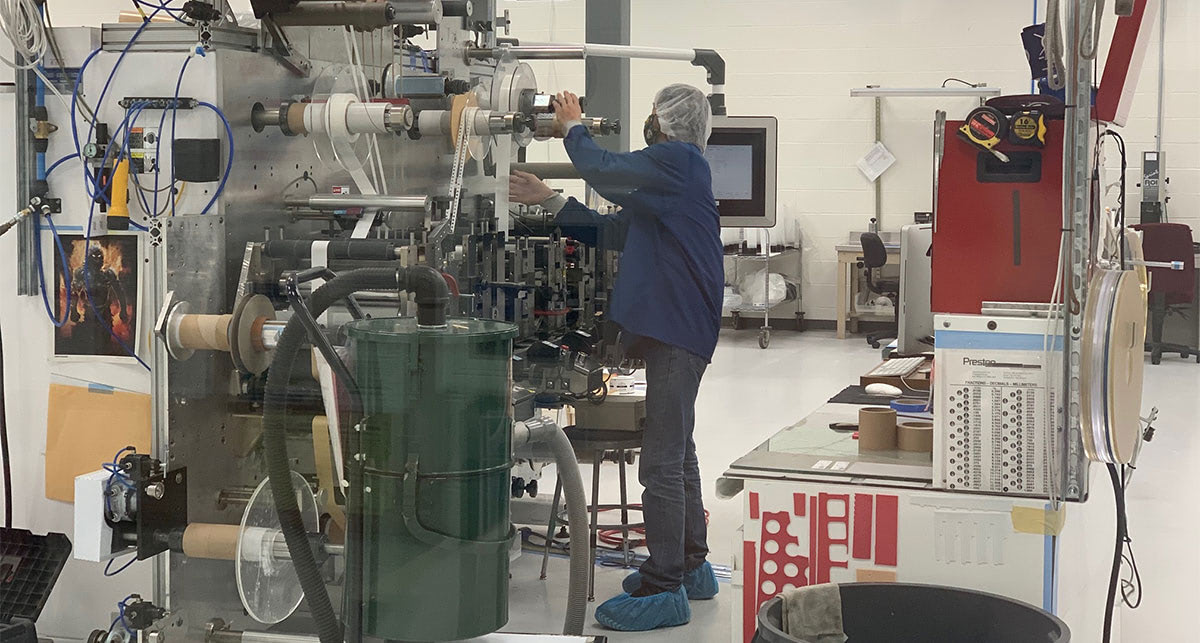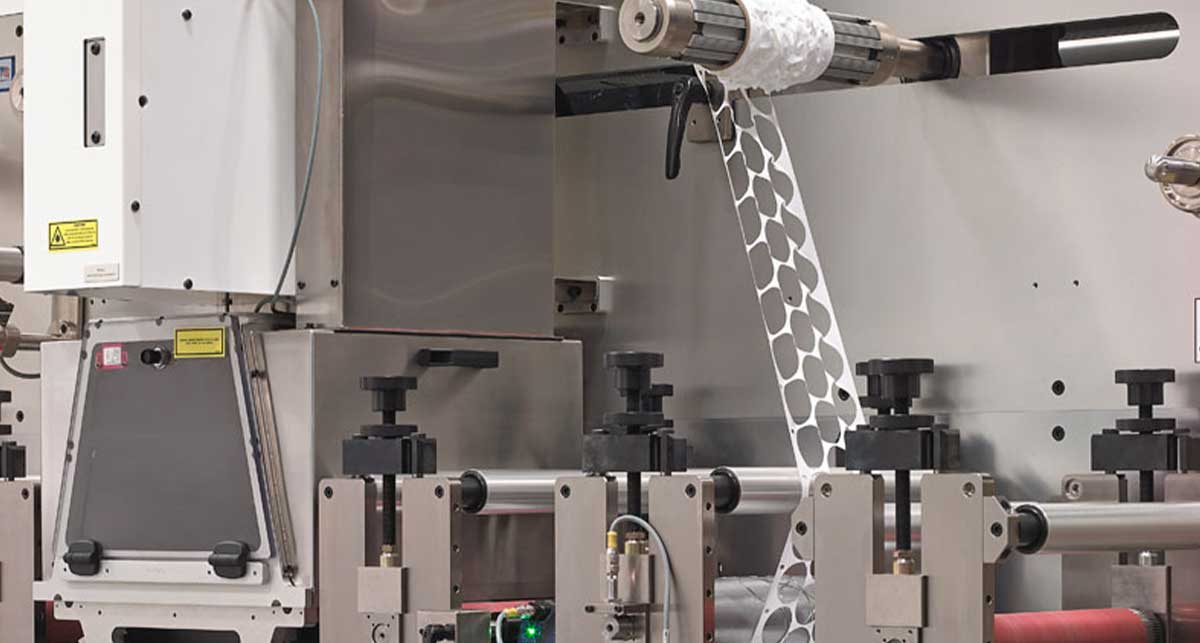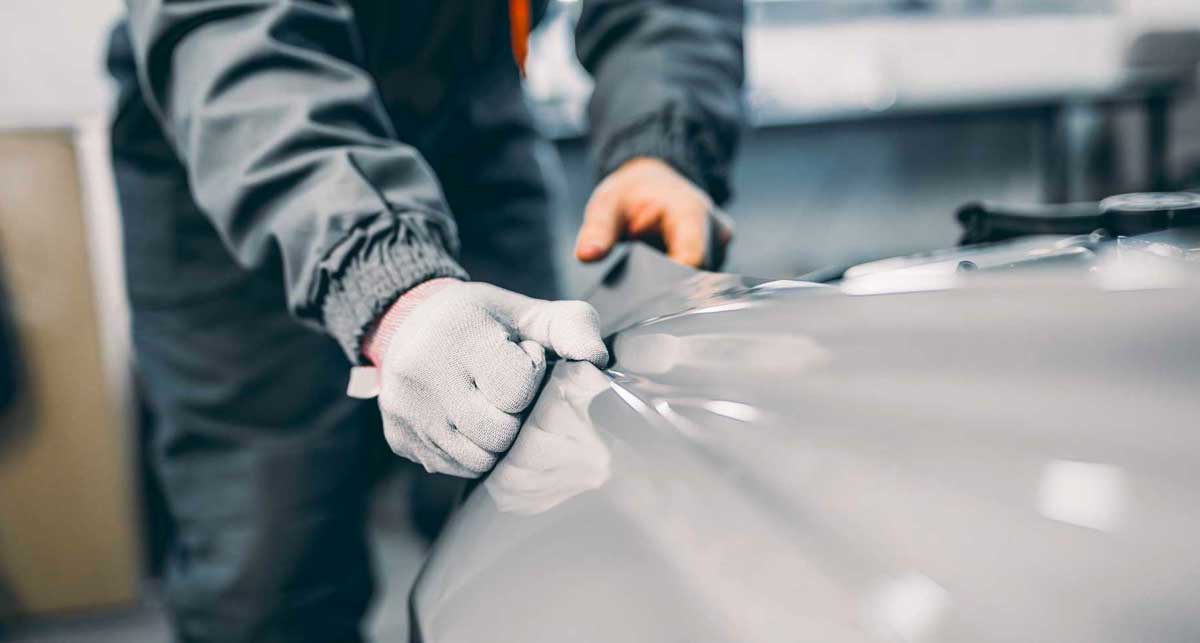“Cutting [your] manufacturing costs” may sound like a get-rich-quick scheme, but it might be more feasible for your business than anticipated.
Whether you’re dealing with quality issues, a slow assembly process, or simply looking to build on your current manufacturing strategy, die cut parts can help improve your production speed & consistency. So really, there’s nothing shady about embracing the benefits of die cutting—it's just a way to refine the commonly overlooked parts of your application process.
Many of our partners have experienced significant improvements in production efficiency over the past 38 years thanks to die cuts.
Read on to learn how die cutting can reduce costs and improve the efficiency of your manufacturing process.
What is Die Cutting?
Die cutting is the process of using custom steel blades (“die cut tools”) to cut shapes out of flexible materials like paper, cardstock, foam, or foil. It stamps them out on die cutting machines like an industrial cookie cutter.
[Pictured above: Rotary die cutting skin-safe hydrocolloid material]
Manufacturers use these parts in a wide variety of industries, including automotive, aerospace, medical, electronics, and more. Your material, design, and application will decide which method suits your project:
- Flatbed die cutting — Performed on a flatbed press, used primarily for thicker and/or sheeted materials
- Rotary die cutting — Performed on a rotary machine press, used primarily for high volumes due to the speed and efficiency
- Laser cutting — Although it isn’t technically die cutting, laser cutting is also a common, tool-free method used by converters to achieve the same purpose.
How Does Die Cutting Reduce the Cost of Manufacturing?
While die cutting projects may have a higher upfront cost, they can reduce the total cost of a manufacturing process in many ways.
1. FASTER ASSEMBLY
Die cut parts are consistent, maneuverable, and can be automated, all facilitating a quicker assembly process.
Certain processes, such as masking, require sections of material cut to exact sizes, which often entails measuring and cutting parts manually. Die cuts reduce the number of steps in the part’s application, creating an easier assembly.
In addition, using custom features can help improve your assembly process:
- Tabs on liners
- Crack and peel liners
- Perforations
Tabs and other features make it far easier to remove disposable liners and speed up the assembly process.
Lastly, you can use rolls of die cut parts to automate your part application process, which is helpful if you plan to scale your business.
2. IMPROVED PRODUCT QUALITY
Using a die cut process to make your products will increase part consistency and lessen the chance of assembly errors, reducing the time spent correcting mistakes.
Each cut should be the same size (within your functional tolerances), which will help standardize your manufacturing process. You can also create assembly kits of die cut parts to ensure no pieces are forgotten and keep an accurate record of part usage.
Ultimately, high-quality products will reduce the expenses caused by defects and manual assembly. A trustworthy converter will match your agreed-upon product quality expectations to deliver consistent parts.
3. 1-PASS PRODUCTION
A “pass” is one run within the production process (e.g., through a machine), and multiple passes add up to increased time and costs (labor, transportation, materials, and more).
1-pass production happens when a single pass produces a completed product; materials enter one side, and a part comes out the other.
The benefits of having 1-pass production are that it allows for:
- Increased production speed
- Better accuracy and quality
- Reduced hand labor
- Lower cost, less transportation & hassle
- Minimized intrusion of biological matter
4. REDUCED MATERIAL WASTE
When you use die cuts, every yard of material is accounted for in order to create the most effective machine run. While cutting out parts will inevitably produce some waste, the overall waste may be lower than your current application process.
5. EASILY SCALABLE PROCESS
Die cutting is an excellent way to scale a production process. It can involve more work upfront, namely adjusting your design for manufacturing, but once the design is finalized, rotary die cutting is usually the most efficient converting process for making high-volume flexible material products.
As we previously mentioned, die cutting also lends itself well to automation. Instead of adding more people to complete the same task at higher volumes, you can reduce cost by automating your processes with consistent die cuts. If you’re interested in automating the application process of your materials, you may want to consider using rolls of parts.
Getting a Die Cut Production Quote
No two projects are alike, and the price range will vary considerably depending on your part complexity, quantity, and material.
When you request a quote on a custom project, be prepared to discuss your product’s use, design, and application from a technical perspective. This will allow your converter to provide you with an accurate estimate.
Reach out to get an accurate die cut quote and discuss how custom parts can help your production process. Once you have requested a quote, our team will contact you to discuss your solution.
For more information on cost, you can check out the die cut pricing page or visit our Learning Center.







